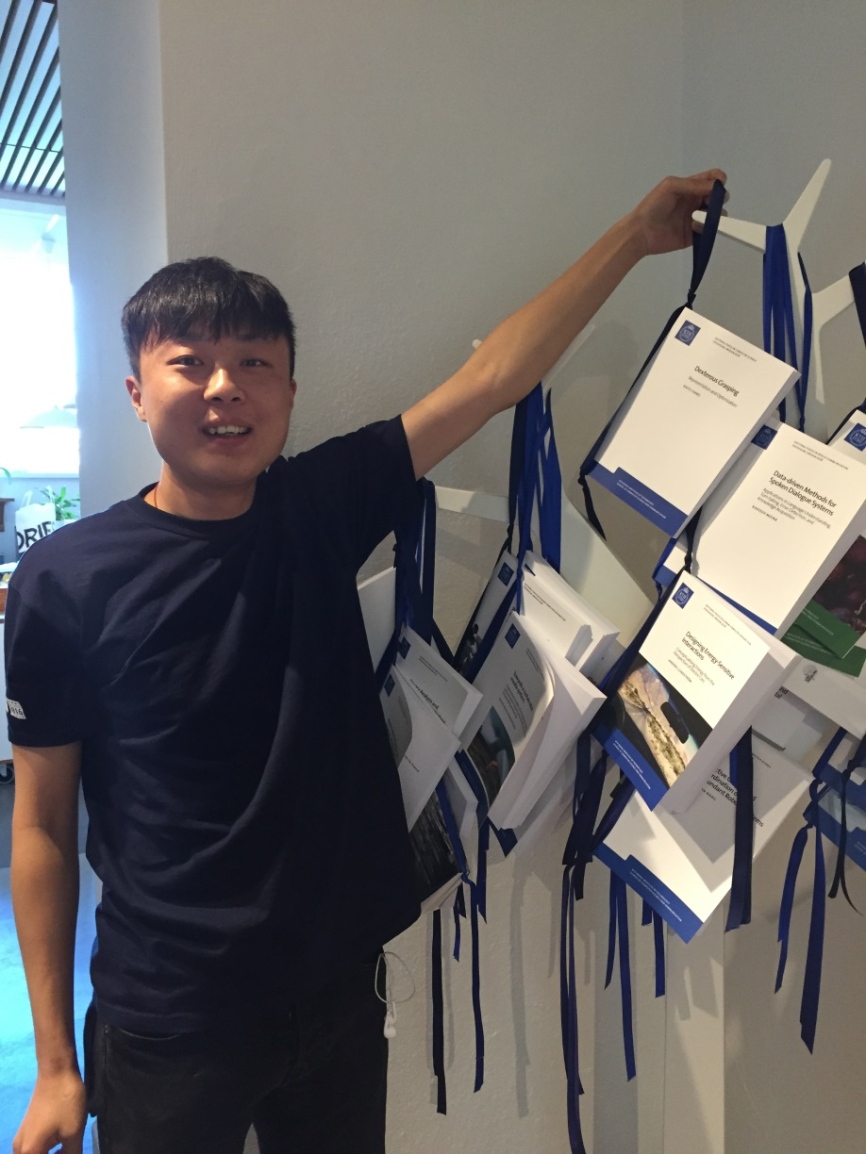Dexterous Grasping - Representation and Optimization
Time: Fri 2016-06-03 10.00
Location: D2, Lindstedtsvägen 5, Stockholm
Subject area: Robotics and Computer Vision
Doctoral student: Hang Kaiyu , Cvap
Opponent: Professor Nancy Pollard
Supervisor: Professor Danica Kragic
Abstract
Many robot object interactions require that an object is firmly held, and that the grasp remains stable during the whole manipulation process. Based on grasp wrench space, this thesis address the problems of measuring the grasp sensitivity against friction changes, planning contacts and hand configurations on mesh and point cloud representations of arbitrary objects, planning adaptable grasps and finger gaiting for keeping a grasp stable under various external disturbances, as well as learning of grasping manifolds for more accurate reachability and inverse kinematics computation for multifingered grasping.
Firstly, we propose a new concept called friction sensitivity, which measures how susceptible a specific grasp is to changes in the underlying frictionc oefficients. We develop algorithms for the synthesis of stable grasps with low friction sensitivity and for the synthesis of stable grasps in the case of small friction coefficients.
Secondly, for fast planning of contacts and hand configurations for dexterous grasping, as well as keeping the stability of a grasp during execution, we present a unified framework for grasp planning and in-hand grasp adaptation using visual, tactile and proprioceptive feedback. The main objective of the proposed framework is to enable fingertip grasping by addressing problems of changed weight of the object, slippage and external disturbances. For this purpose, we introduce the Hierarchical Fingertip Space (HFTS) as a representation enabling optimization for both efficient grasp synthesis and online finger gaiting. Grasp synthesis is followed by a grasp adaptation step that consists of both grasp force adaptation through impedance control and regrasping/finger gaiting when the former is not sufficient.
Lastly, to improve the efficiency and accuracy of dexterous grasping and in-hand manipulation, we present a system for fingertip grasp planning that incrementally learns a heuristic for hand reachability and multi-fingered inverse kinematics. During execution the system plans and executes fingertip grasps using Canny’s grasp quality metric and a learned random forest based hand reachability heuristic. In the offline module, this heuristic is improved based on a grasping manifold that is incrementally learned from the experiences collected during execution.


